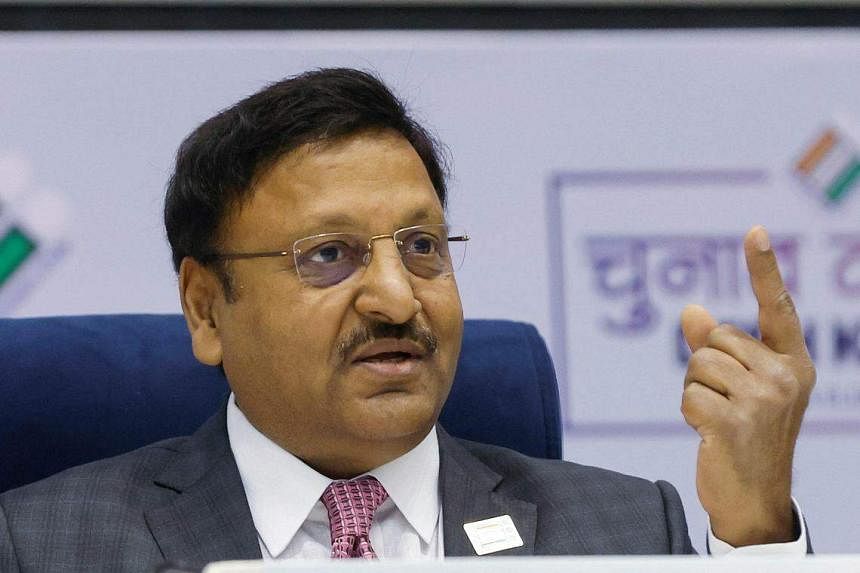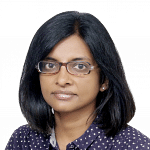NEW DELHI – Indians will start voting from April 19 in seven-stage, staggered elections in which Prime Minister Narendra Modi will seek a third consecutive term in power.
Mr Modi is heading into these elections on a very confident note, compared with elections in 2014 and 2019, amid fast economic growth, a rise in Hindu nationalism and an increase in India’s global stature.
Around 970 million Indians are eligible to vote in the elections that end on June 1. The results are expected to be known on June 4, when the counting of votes will take place.
Announcing the election dates on March 16, India’s chief election commissioner Rajiv Kumar called the Indian elections the “biggest democratic festival” in the world.
He said: “2024 is the year of elections across the world. We are committed to give India a truly festive democratic environment.”
But he said that misinformation, on top of corruption and voter intimidation, remained the biggest challenges to the electoral process. “Tackling misinformation in today’s digital age is complex,” said Mr Kumar, promising tough action against those who spread fake news.
Elections in India are a massive undertaking, with some 1.05 million booths and 5.5 million electronic voting machines in 2024, and 15 million election officials who will oversee the elections across 28 states and nine union territories.
Mr Kumar said election officials would go on horseback and elephants, as well as helicopters, to reach the most remote parts of the country.
In India, the party or alliance that crosses the simple majority of 272 in the 543-seat Lower House of Parliament will be eligible to form the government. The winning alliance or party will decide on the next prime minister.
The National Democratic Alliance (NDA) led by the ruling Bharatiya Janata Party (BJP) will face off against a rainbow coalition of opposition parties called India, led by the Congress party.
Mr Modi is seen as the prime ministerial face of the BJP alliance, while the opposition alliance is yet to name a prime ministerial candidate.
In 2019, the NDA won 353 seats, 282 of which were clinched by the BJP. Congress won just 44 seats, and its alliance 91 seats.
The BJP’s electoral chances got a recent boost with the opening of a temple for Lord Ram in Ayodhya in Uttar Pradesh state in January, and the implementation of the Citizenship Amendment Act, which gives citizenship to refugees belonging to several minority religions – most notably Hindus – from three neighbouring Muslim-majority countries.
Both moves will increase Hindu support for the BJP, said analysts.

Mr Modi has been criss-crossing the country to drum up support for the BJP by highlighting the country’s economic growth of more than 7 per cent and the government’s welfare schemes, including health insurance for millions of poor Indians.
“The biggest festival of democracy is here! We, the BJP-NDA, are fully prepared for elections,” posted Mr Modi on X.
The opposition alliance, on the other hand, has struggled to unite and come up with a joint election plan to stop the BJP from attaining its goal of winning 400 seats for the NDA and 370 seats for the party itself.
Opinion polls, though not always right historically, have all predicted a third term in power for the popular Mr Modi. A win would make him the second person to serve a third term, after India’s first prime minister Jawaharlal Nehru, who was from the Congress party.
The News18 Mega Opinion Poll, the latest poll to come out, on March 14 predicted 411 seats for the BJP-led alliance and 105 seats for the opposition alliance.
Still, the poll noted that the BJP would struggle in states like Tamil Nadu, where the party is predicted to win only five out of 39 seats for the Lower House.
The opposition, however, has been hammering home how Mr Modi has failed to control inflation and unemployment.
Congress – which is struggling to regain political relevance since it was ousted from power at the national level in 2014 – has promised to recruit job seekers to three million vacant government posts, and provide apprenticeships for youth after the completion of their education.
Congress leader Rahul Gandhi is on his second political walk across the country in an effort to enthuse party cadres and raise the profile of the party.
His India alliance has gained some momentum, with several of its partner parties in states like Uttar Pradesh agreeing on seat sharing, where the alliance combines support for one chosen candidate.
These elections are also a battle of ideologies, said Congress leader and candidate Shashi Tharoor.
“This is an election about the future of India... if the BJP comes back, they have a vision of India, which bluntly put, is one language, one party, one election, one religion and one leader. That’s going to be their approach. Ours is one of inclusion, of celebrating diversity and pluralism.”
Analysts, however, noted that with elections just two weeks away, the Congress party still has a long way to go to convince voters it can put up a strong fight against the BJP.
“I think if you ask people, unemployment and price rise are two of the biggest factors. But voters are wondering who will solve the problem,” said Dr Sandeep Shastri, national coordinator of the Lokniti Network, which conducts election surveys.
“The ones opposed to the current government are not seen as capable of solving that problem.”


